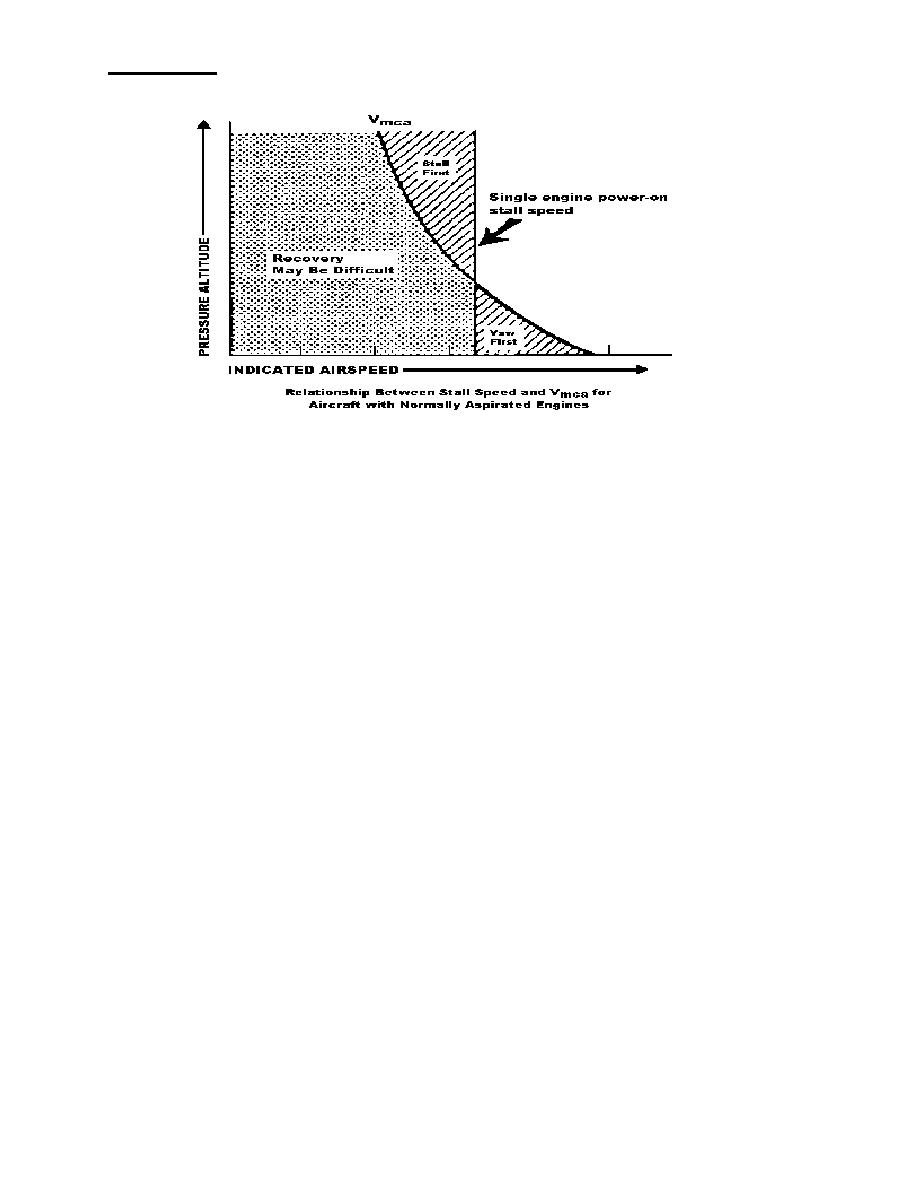 |
|||
|
|
|||
|
|
|||
| ||||||||||
|
|  APPENDIX F
Figure E-7
Recovery from flight below Vmca is made by reducing power to idle on the operating (good) engine,
decreasing the angle of attack by dropping the nose, accelerating through Vmca and then returning power to
the operating engine and accelerating to Vyse, the blue radial speed.
Best Single-Engine Rate-of-Climb Speed (Vyse)
The blue radial on the airspeed indicator designates Vyse. Vyse delivers the greatest gain in altitude in the
shortest possible time and is based on the following criteria:
Critical engine inoperative, and its propeller in the minimum drag position.
Operating engine set at not more than maximum continuous power.
Landing gear retracted.
Wing flaps in the most favorable (i.e., best lift/drag ratio) position.
Cowl flaps as required for engine cooling.
Airplane flown at recommended bank angle.
Drag caused by a windmilling propeller, extended landing gear, or flaps in the landing position will
severely degrade or destroy single-engine climb performance. Single-engine climb performance varies
widely with type of airplane, weight, temperature, altitude, and airplane configuration. The climb gradient
(altitude gain or loss per mile) may be marginal, or even negative, under some conditions. Study the Pilot's
Operating Handbook for your specific airplane and know what performance to expect with one engine out.
Remember, Federal Aviation Regulations do not require any single-engine climb performance for light
twins weighing 6000 pounds or less and having a stall speed of 61 knots or less.
Best Single-Engine Angle-of-Climb Airspeed (Vxse).
Vxse is used only to clear obstructions during initial climb-out as it gives the greatest altitude gain per unit
of horizontal distance. It provides less engine cooling and requires more rudder control than Vyse.
F-5
|
|
Privacy Statement - Press Release - Copyright Information. - Contact Us |